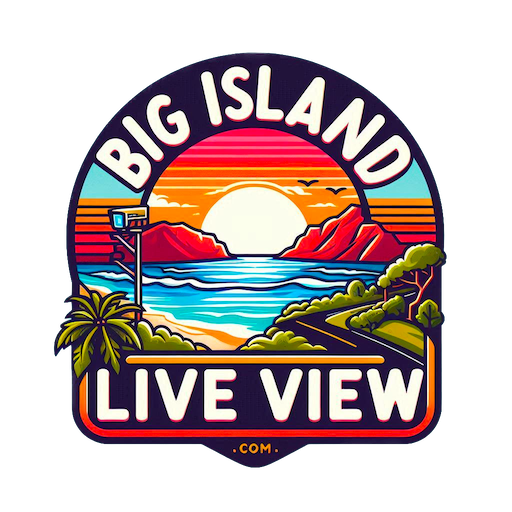Kamaoa, Big Island Webcams
Kamaoa FAA Webcam
Kamaoa, Hawaii: A Journey Through Time
Kamaoa, Big Island Webcams. Nestled on the southern tip of the Big Island of Hawaii, the region of Kamaoa holds a fascinating history that weaves together ancient Hawaiian civilization, European exploration, the rise and fall of the sugar industry, and the modern-day resurgence of cultural pride and sustainability. From its lush landscapes to its vibrant community, Kamaoa is a living testament to the resilience and adaptability of its people.
Ancient Hawaiian Civilization
Long before the arrival of European explorers, Kamaoa was inhabited by native Hawaiians who had established a thriving community. The early Hawaiians, or Kanaka Maoli, practiced a subsistence lifestyle, relying on the fertile land and abundant ocean for sustenance. The rich volcanic soil of Kamaoa supported the cultivation of taro, sweet potatoes, and other essential crops, while the nearby waters provided a steady supply of fish and other marine resources.
The social structure of ancient Hawaiian society was organized around the ahupua’a system, a traditional land division that extended from the mountains to the sea. Each ahupua’a was a self-sufficient community, and Kamaoa was part of the larger Ka’u district. This system allowed the early Hawaiians to manage their resources sustainably, ensuring the well-being and harmony of their community.
European Exploration and Contact
The first recorded European contact with the Hawaiian Islands occurred in 1778 when British explorer Captain James Cook arrived. Cook’s arrival marked the beginning of a new era for Hawaii, bringing with it waves of exploration and eventual colonization. Kamaoa, like many other parts of Hawaii, experienced significant changes during this period.
European explorers and missionaries introduced new technologies, agricultural practices, and religious beliefs to the native Hawaiians. The introduction of Western goods and ideas had a profound impact on the local culture and economy. Missionaries established churches and schools in the region, and the community began to adopt aspects of Western culture while still preserving their traditional Hawaiian heritage.
In the late 19th and early 20th centuries, the sugar industry became a dominant force in Hawaii’s economy. Kamaoa, with its fertile lands and favorable climate, was an ideal location for sugar plantations. The Kamaoa Sugar Plantation, established in the early 1900s, played a crucial role in the community’s development.
The plantation attracted a diverse workforce, including laborers from China, Japan, the Philippines, and Portugal. This influx of immigrants contributed to the cultural melting pot that defines modern-day Hawaii. The plantation era also brought significant economic growth to Kamaoa, with the construction of essential infrastructure such as roads, schools, and hospitals.
Life on the plantation was arduous, with laborers working long hours in challenging conditions. Despite the hardships, the plantation workers formed tight-knit communities, sharing their unique customs and traditions. This blending of cultures laid the foundation for the multicultural society that characterizes Kamaoa today.
Decline of the Sugar Industry
The sugar industry in Hawaii began to decline in the mid-20th century due to various factors, including competition from other sugar-producing regions and changing economic conditions. The Kamaoa Sugar Plantation closed its doors in the mid-1900s, marking the end of an era for the community. The closure of the plantation led to significant economic challenges for Kamaoa, as many residents relied on the sugar industry for their livelihoods.
In response to these challenges, Kamaoa residents began to explore new economic opportunities. Tourism emerged as a key industry, capitalizing on the island’s natural beauty and rich cultural heritage. The shift from agriculture to tourism brought about significant changes in the community, with new businesses and services catering to the growing number of visitors.
Modern Kamaoa
Today, Kamaoa is a thriving community that seamlessly blends its historical charm with modern amenities. The region’s natural beauty, including its stunning coastline and lush landscapes, attracts visitors from around the world. Kamaoa Beach, a popular destination for both locals and tourists, offers pristine sandy shores and excellent opportunities for swimming and snorkeling.
Kamaoa’s rich history is celebrated through various cultural events and festivals, such as the annual Ka’u Coffee Festival, which honors the community’s agricultural heritage and traditions. Visitors can explore historical sites, such as the remnants of the Kamaoa Sugar Plantation, and learn about the area’s past at local museums and cultural centers.
The community of Kamaoa remains deeply connected to its roots, with a strong emphasis on preserving and promoting its cultural heritage. Efforts to protect the natural environment, including the coastline and native flora and fauna, are a testament to the community’s commitment to sustainability.
Kamaoa’s Legacy
Kamaoa, Hawaii, is a living testament to the resilience and adaptability of its people. From its ancient Hawaiian roots to its vibrant modern-day community, Kamaoa’s history is a captivating story of cultural fusion, perseverance, and transformation. As the community continues to evolve, it remains dedicated to honoring its past while embracing the future, ensuring that the rich tapestry of Kamaoa’s history is preserved for generations to come.
For more information, visit the official Hawaii County website.
